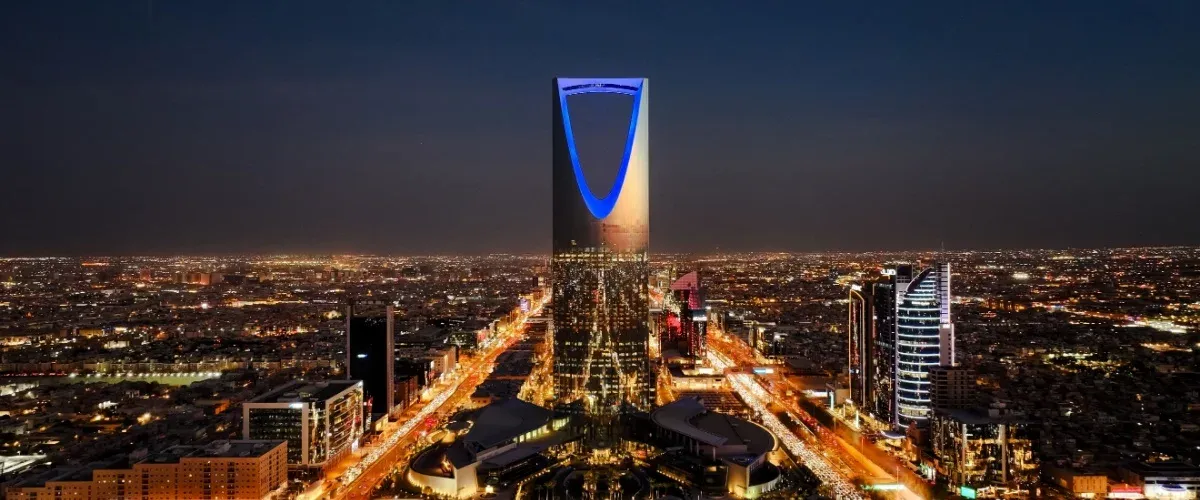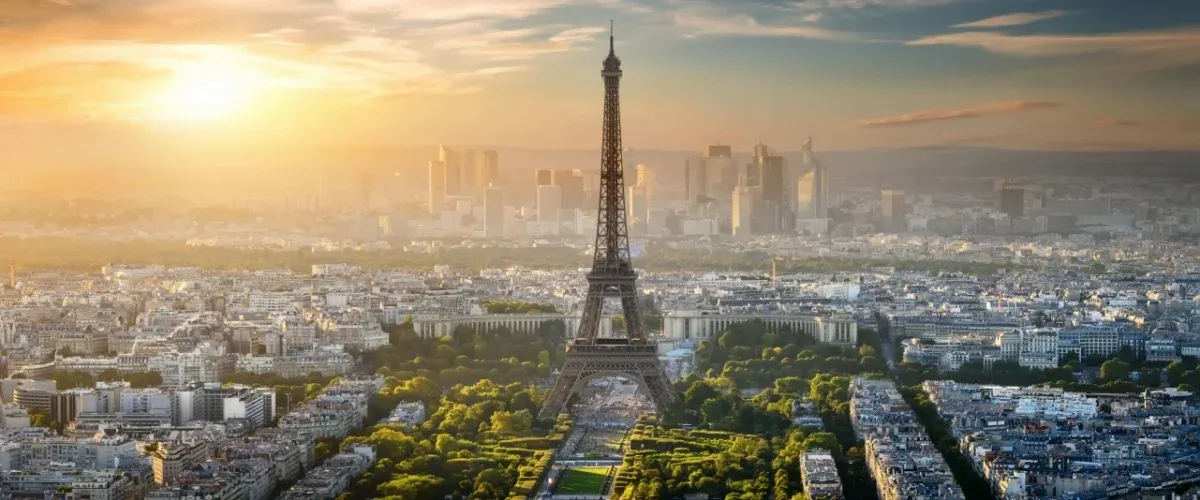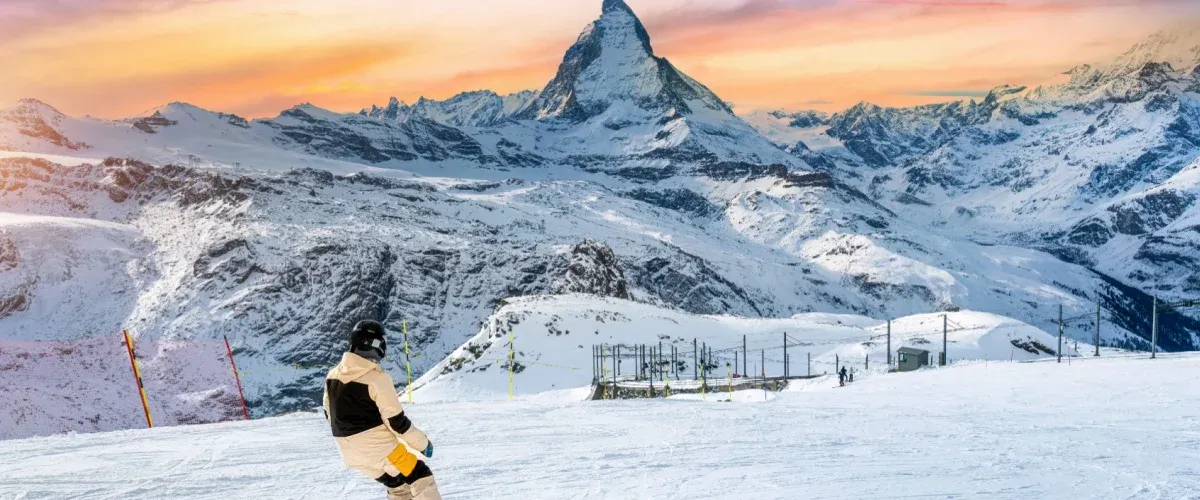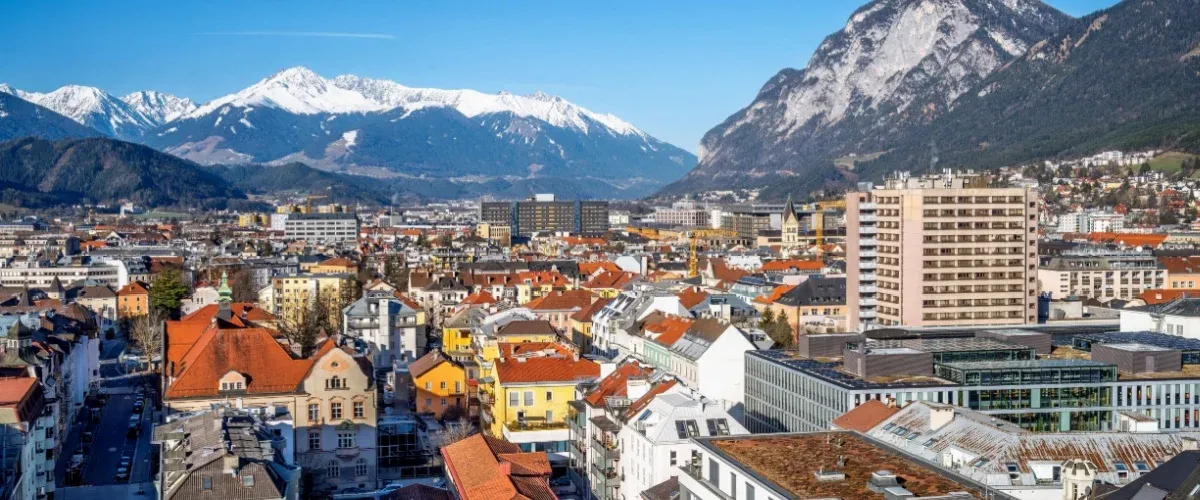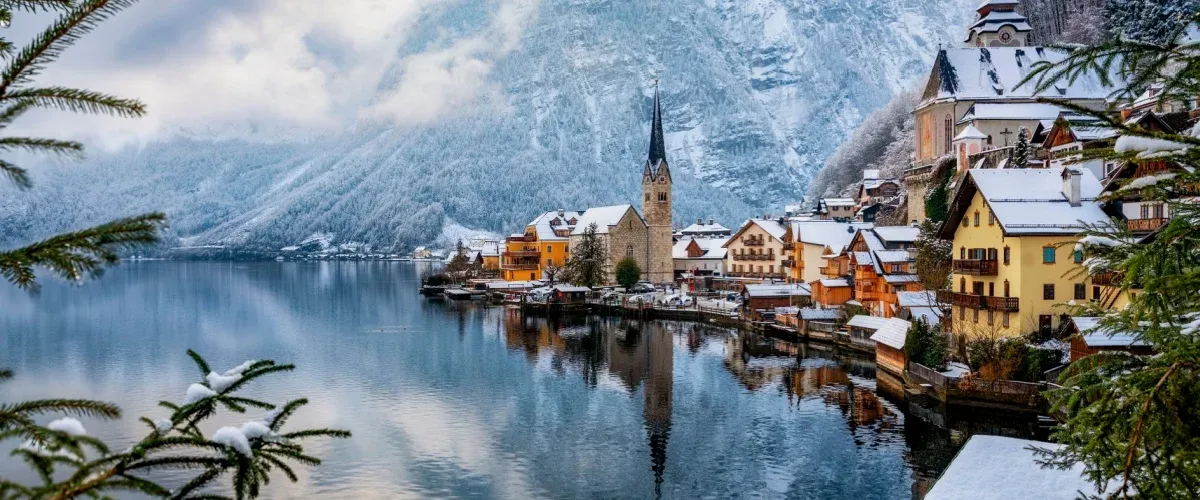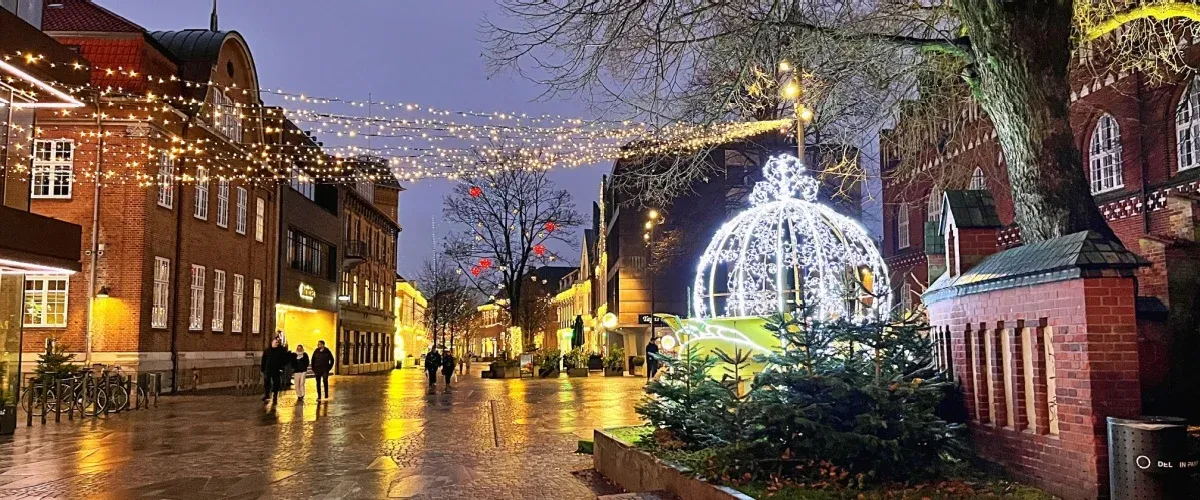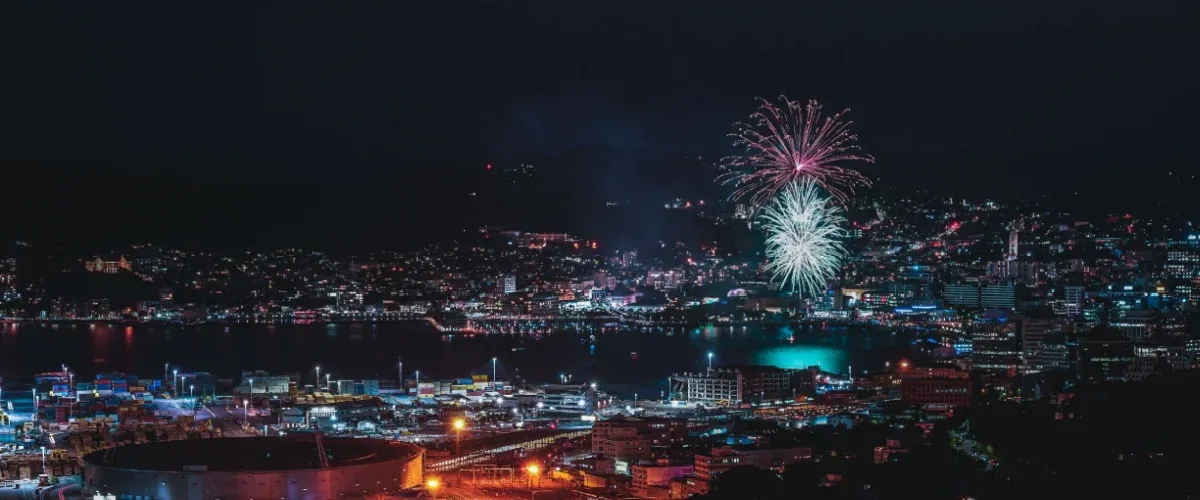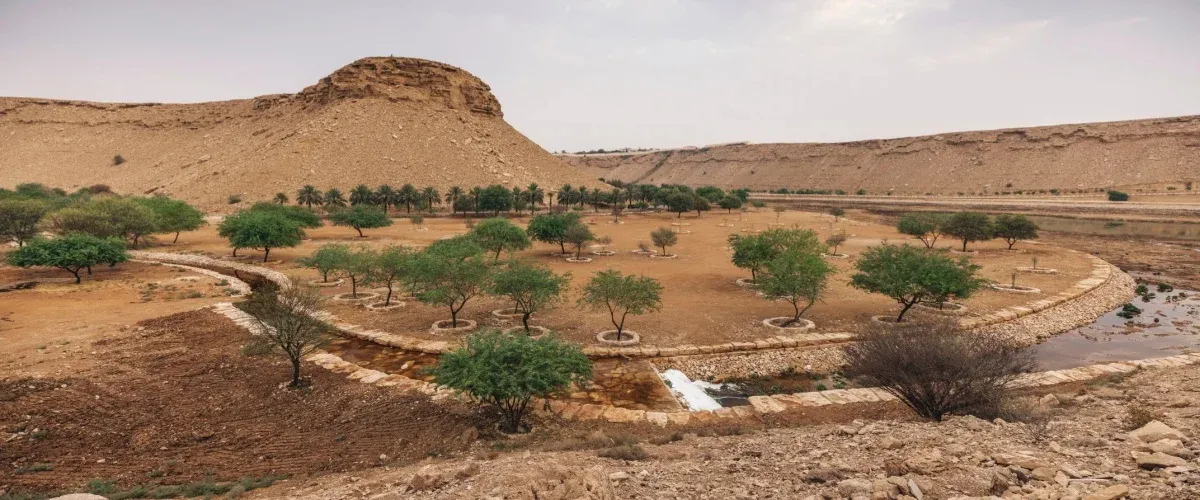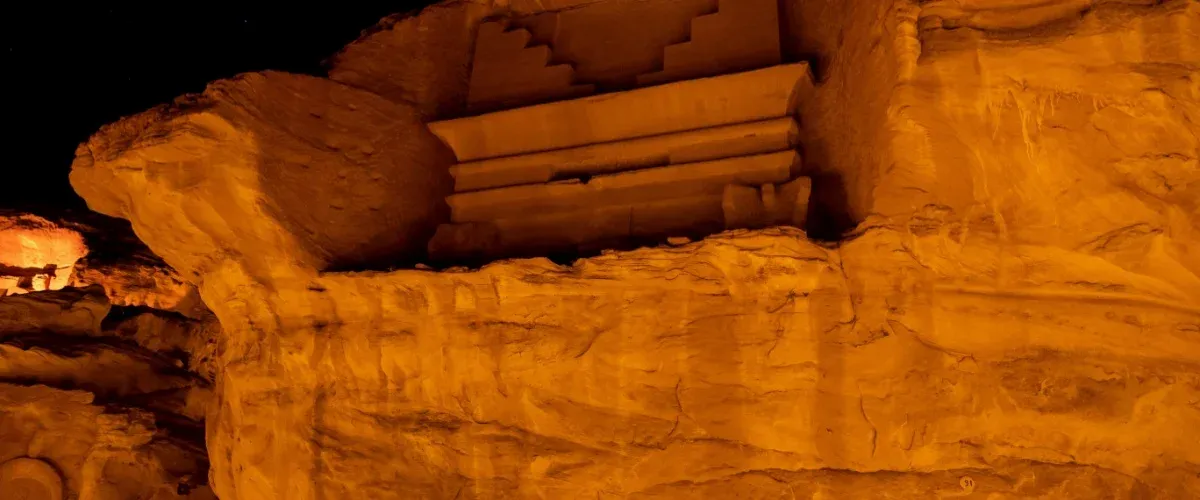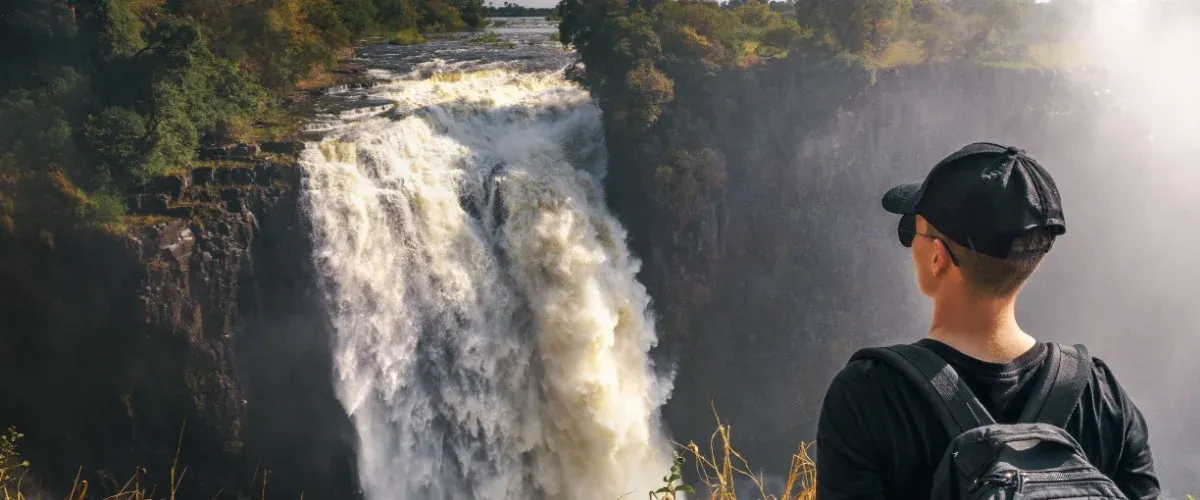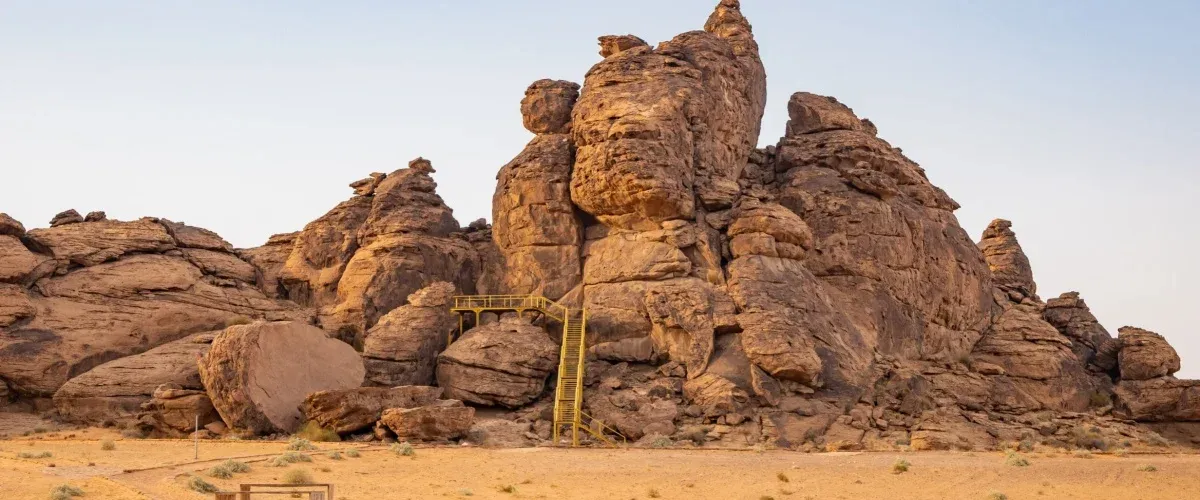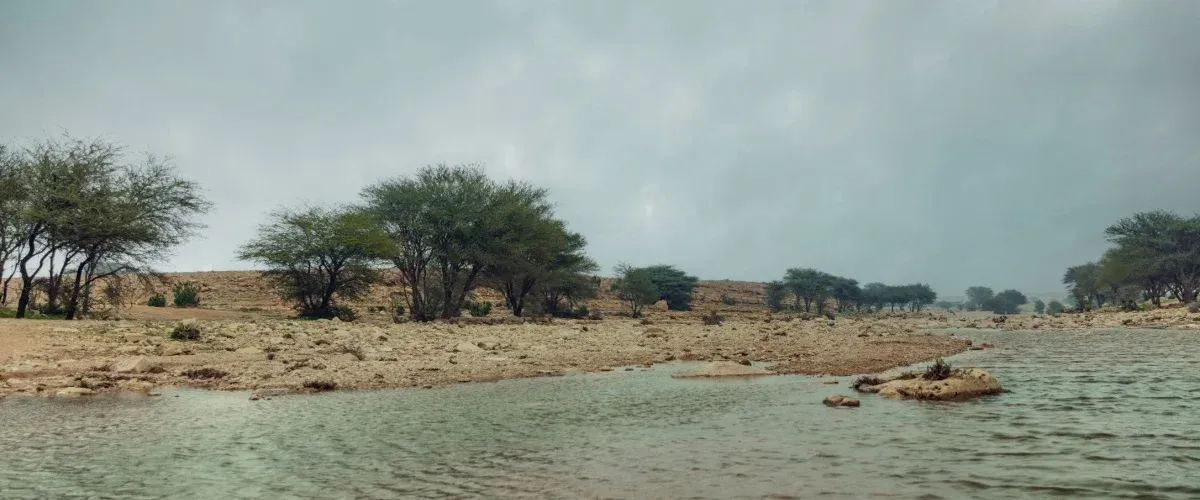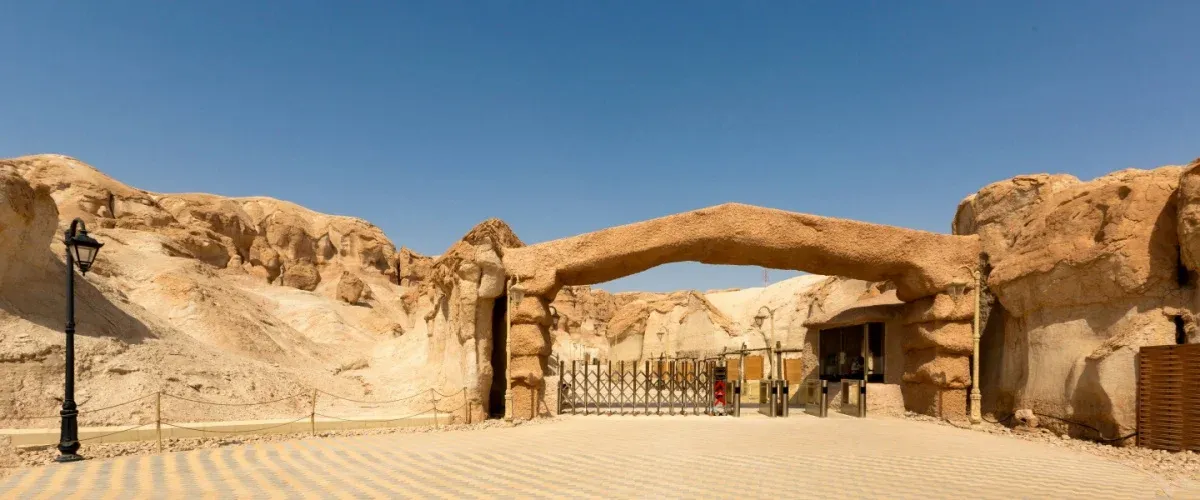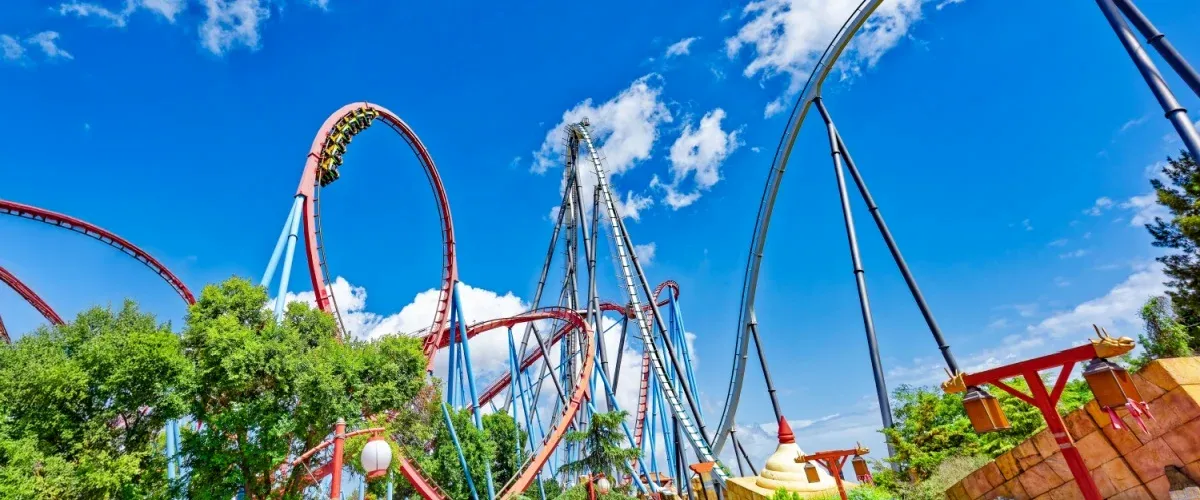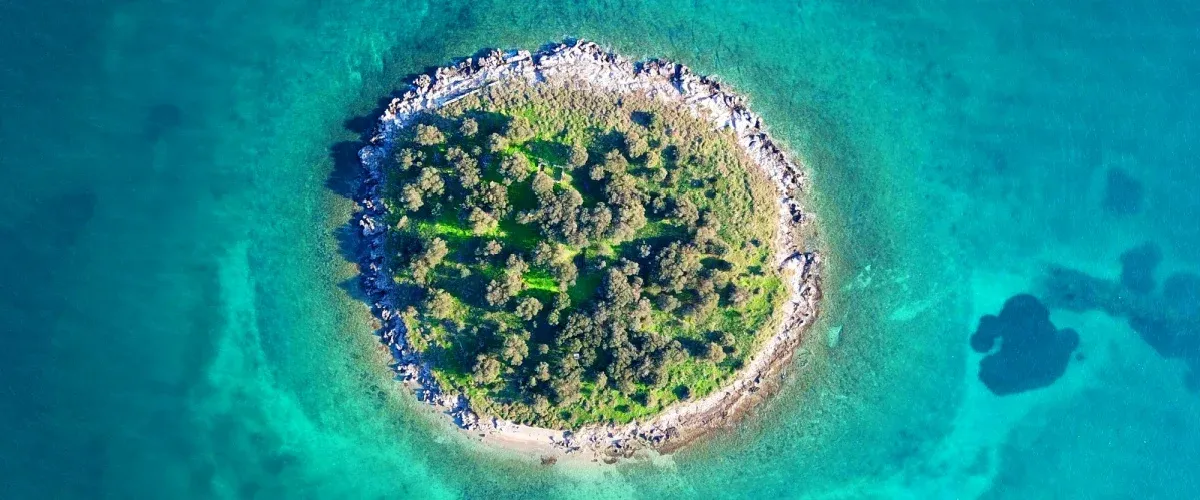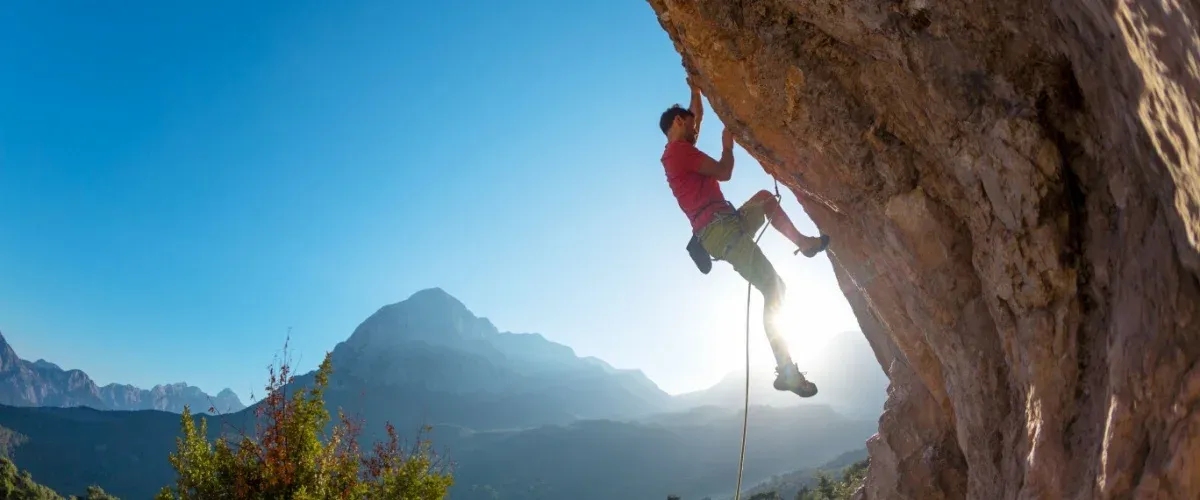If you’re thinking about a new place to explore in 2025, Saudi Arabia is a great choice. The country is now open to travelers and offers a mix of old and new. You’ll find ancient sites, modern cities, tall mountains, and wide deserts. There’s a lot more to see beyond the famous spots. Many places are still quiet and full of local charm. People here are friendly and proud to share their culture and traditions. The government is also working hard to grow tourism, so it’s a good time to visit. New places are being developed, and there’s something for everyone; whether you like history, nature, or city life. If you enjoy discovering places that are not too crowded, this is your chance. Saudi Arabia’s hidden gems are ready to surprise you. Pack your bags and come see what makes this country special.
Visit These Top 13 Hidden Gems of Saudi Arabia
1. AlUla - The Open-Air Museum
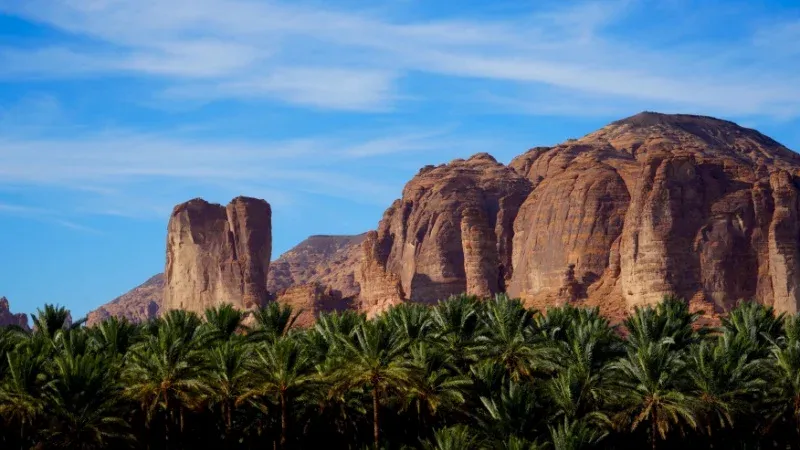
AlUla is one of the most special places in Saudi Arabia. It is known for its ancient tombs, rock carvings, and beautiful desert landscapes. One of the main highlights is Hegra (also called Madain Saleh), a UNESCO World Heritage Site with over 100 tombs carved into the rocks by the Nabataeans. AlUla also has unique rock formations like Elephant Rock and old mud villages that show how people lived long ago. The area is full of history, but it also offers modern experiences like art shows, concerts, and adventure activities such as hiking and hot air balloon rides.
Best Time to Visit: October to March
AlUla: Travel Tips
- Book in Advance: Entry to sites like Hegra and guided tours often require advance booking, especially during peak season.
- Dress Modestly: AlUla follows Saudi cultural norms, so wear loose, modest clothing.
- Stay Hydrated: The desert climate can be dry. Always carry a water bottle with you.
- Use Local Guides: Hiring a local guide helps you understand the history and stories behind the ancient sites.
- Best Time for Photos: Early morning or late afternoon offers the best light for photography and pleasant weather.
2. Asir Mountains - The Green Highlands
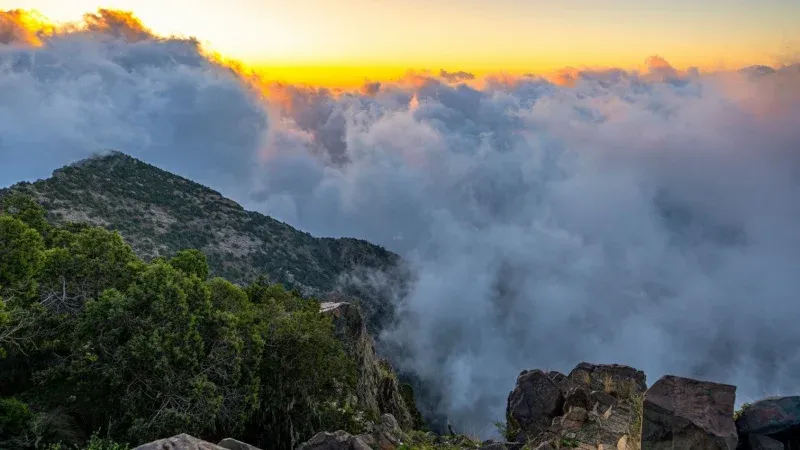
The Asir Mountains are in the southwest of Saudi Arabia, near the city of Abha. This area is known for its cool weather, green hills, and beautiful views. It is very different from the country’s deserts. The mountains are part of the Asir National Park, which has walking trails, picnic spots, and rare plants and birds. The region is also great for outdoor activities like hiking, cable car rides, and enjoying fresh mountain air. Because of the high elevation, the Asir Mountains are cooler than most parts of Saudi Arabia, making it a favorite place for locals and tourists during the hot summer months.
Best Time to Visit: May to September
Asir: Travel Tips
- Pack for Cool Weather: Asir is cooler than most of Saudi Arabia—bring a light jacket, especially for the evenings.
- Use Local Transport or Rent a Car: Public transport is limited, so renting a car or hiring a driver is best.
- Visit Local Markets: Try local honey, spices, and handmade crafts sold in Asir’s traditional markets.
- Try Local Food: Dishes like “Areeka” and “Maqshush” are local favorites you should taste.
Suggested Read: Places to Visit in Aseer: Enjoy the Panoramic Views and the Heritage
3. Farasan Islands - The Untouched Archipelago
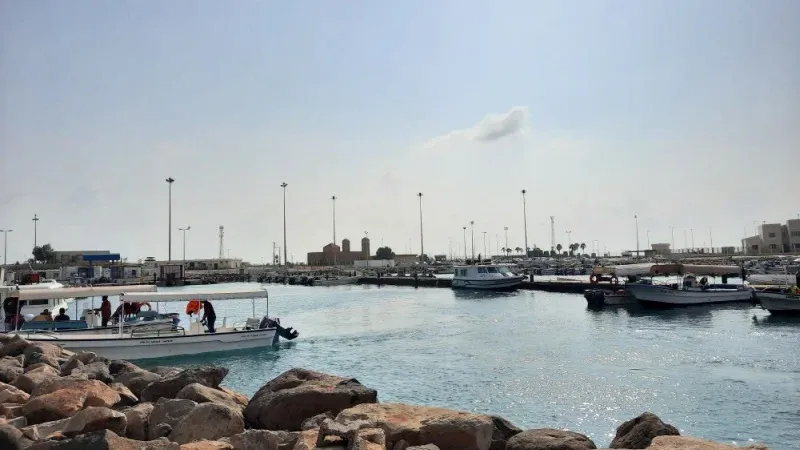
Located off the coast of Jazan in southwestern Saudi Arabia, the Farasan Islands are a group of islands in the Red Sea. These islands are known for their clear blue water, coral reefs, and rich marine life. It’s a great spot for snorkeling, diving, and relaxing on quiet beaches. Farasan is also home to many birds, including flamingos and the rare Farasan gazelle. Visitors can explore old coral stone houses, Ottoman ruins, and natural salt marshes. The main island is connected by ferry from Jazan, which runs daily and is free for passengers. Farasan is peaceful and not crowded, making it a perfect place to relax and enjoy nature.
Best Time to Visit: November to March
Farasan Islands: Travel Tips
- Book the Ferry Early: Ferries from Jazan to Farasan are free but can fill up fast.
- Carry Snacks and Water: Shops are limited on the islands, so bring enough food and drinks for the day.
- Pack Light Beachwear: Bring swimwear, a hat, sunscreen, and sandals for beach and water activities.
- Don’t Miss Snorkeling: The coral reefs are beautiful—bring or rent snorkeling gear to explore underwater life.
4. Edge of the World (Jebel Fihrayn) - Desert Wonders
%20%E2%80%93%20Desert%20Wonders.webp)
Jebel Fihrayn, also known as the Edge of the World, is a stunning natural site about 90 km northwest of Riyadh. It features dramatic cliffs rising up to 300 meters high. From the top, you can look out over a vast desert plain with no visible end. These cliffs are part of the Tuwaiq Escarpment, formed millions of years ago, and you can even spot marine fossils in the rock. Tourists can hike to viewpoints, picnic in the nearby Acacia Valley, and watch the sunrise or sunset over the endless horizon. The area is remote, with no facilities, and is best reached by 4×4 vehicles or guided tours from Riyadh.
Best Time to Visit: October to March
Edge of the World: Travel Tips
- Use a 4x4 Vehicle: The road to the site is rough and rocky—only suitable for four-wheel-drive vehicles.
- Join a Guided Tour: If you're not used to desert driving, it's safer to go with a local tour group.
- Go Early or Late: Visit early in the morning or around sunset for cooler weather and better views.
- Bring Water and Snacks: There are no shops or facilities nearby, so carry enough supplies.
- Wear Comfortable Shoes: You’ll need good shoes for walking on rocky paths and climbing small hills.
Suggested Read: Desert Safari In Saudi Arabia: Adventurous Experience in the Golden Sand of Middle East
5. Rijal Almaa - The Painted Village
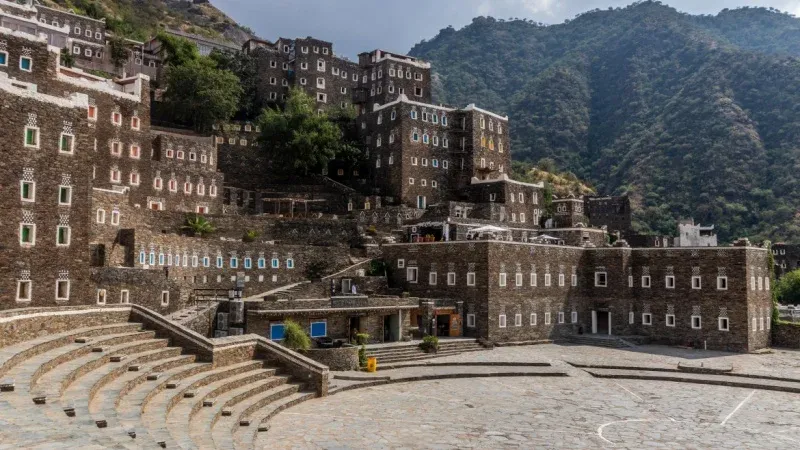
Rijal Almaa is a traditional village in the Asir Mountains, about 45 km from the city of Abha in southwest Saudi Arabia. The village is over 900 years old and was once an important stop on ancient trade routes. It is famous for its tall buildings made from stone, clay, and wood. The homes are decorated with colorful windows and painted wall art called Al-Qatt Al-Asiri, a local art style made by women. At the center of the village is a heritage museum that displays old tools, clothes, jewelry, and books. Rijal Almaa has been recognized as one of the most beautiful historic villages in the world for its unique culture and architecture.
Best Time to Visit: October to April
Rijal Almaa: Travel Tips
- Start Early: Mornings are best for exploring before it gets too warm.
- Wear Comfy Shoes: The village has uneven stone paths and steps, so wear good walking shoes.
- Bring Water: Carry your own water, especially if you're visiting in warmer months.
- Hire a Local Guide: A guide can help you understand the history and culture better.
- Visit the Museum: Don’t miss the heritage museum—it has many interesting old items.
6. Wadi Al Disah Canyon Oasis
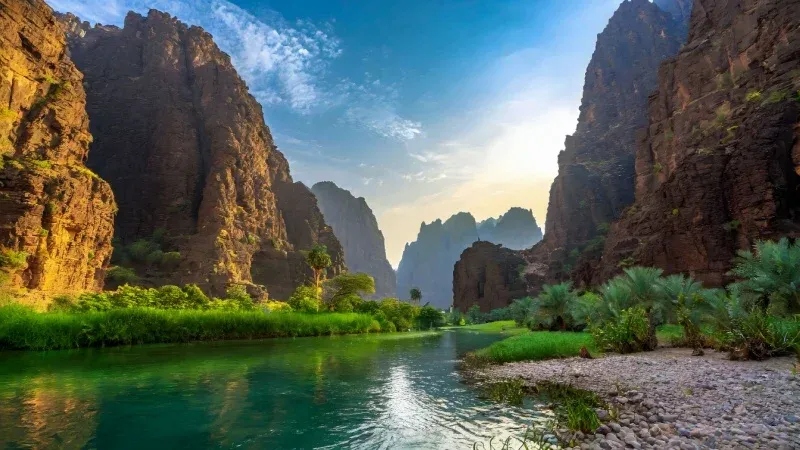
Located in Tabuk region of northwest Saudi Arabia, Wadi Al Disah is a beautiful valley. It is about 220 kilometers from the city of Tabuk and is part of the Prince Mohammad bin Salman Nature Reserve. The valley is known for its tall red sandstone cliffs, flowing springs, and lush greenery filled with palm trees and fruit plants. Wadi Al Disah means “Valley of Palm Trees” and it lives up to its name with its peaceful, green surroundings. The area is also home to ancient carvings and inscriptions on the rocks. Visitors often enjoy hiking, picnicking, or camping under the stars. The dramatic rock formations and golden light at sunset make the valley even more special.
Best Time to Visit: November to March
Wadi Al Disah: Travel Tips
- Go in the cooler months (November to March) for the best weather.
- Start early in the day to enjoy the valley before it gets too warm.
- Wear comfortable hiking shoes-some areas are rocky or sandy.
- Bring water and snacks, as there are no shops inside the valley.
- Use a 4x4 vehicle if you plan to explore inside areas.
Suggested Read: Explore the Beauty of Al Ahsa Oasis in Saudi Arabia
7. Jeddah’s Historic Al-Balad - The Old Quarter
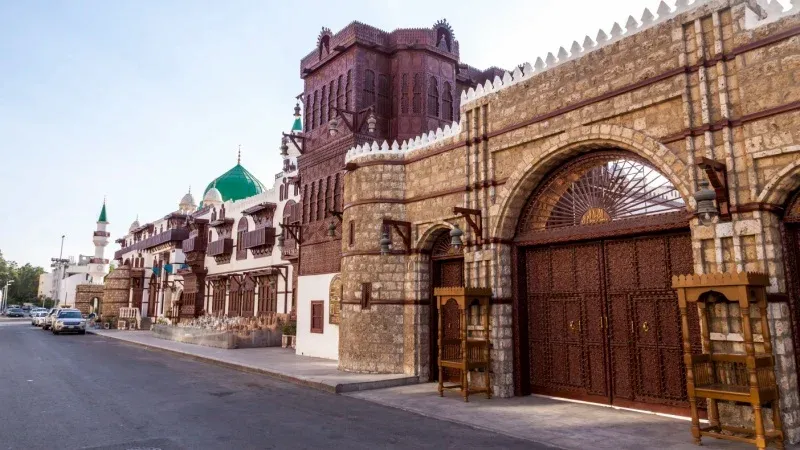
Al‑Balad is the old town of Jeddah and a UNESCO World Heritage Site since 2014. It covers about 2.5 km² and has more than 650 restored buildings made from coral stone and wood. You’ll find ancient mosques like Al‑Shafi’i mosque and historic merchant houses with wooden lattice balconies called rawashin. Al‑Balad was Jeddah’s main port for pilgrims traveling to Mecca during the early Islamic era. Today, its narrow alleys are home to markets (souqs), small museums like Beit Nassif House, traditional cafés, art studios, and cultural events. Recent efforts have revived local crafts and boutique hotels in old heritage houses. Al‑Balad blends its rich past with a creative, modern spirit.
Best Time to Visit: November to April
Al‑Balad: Travel Tips
- Go Early or Late: Visit in the morning or after sunset to avoid the heat and enjoy a quieter atmosphere.
- Wear Comfortable Shoes: Streets are uneven and best explored on foot.
- Stay Hydrated: Carry a water bottle, especially in warmer months.
- Respect Local Dress Codes: Dress modestly, as this is a traditional area.
- Visit During Weekdays: It’s less crowded than weekends and gives you more space to explore.
- Bring Cash: Many small shops and food stalls only take cash.
- Hire a Guide (Optional): A local guide can share stories and history you might miss on your own.
8. Red Sand Dunes near Riyadh - Adrenaline and Fun

The Red Sand Dunes, located about 80 km northeast of Riyadh, are famous for their deep red sand and sweeping desert views. These striking dunes stretch across the Ad‑Dahna desert and rise up to several hundred meters. Tourists can enjoy activities like dune bashing in 4×4 vehicles, sandboarding, quad biking, and camel rides. The dunes are also a great spot for photography, star-gazing, and peaceful desert picnics. This area showcases vibrant red-sand landscapes that change with the wind and glow at sunrise and sunset. It’s a favorite weekend trip for locals and tourists looking for a mix of adventure and nature.
Best Time to Visit: November to March
Red Sand Dunes near Riyadh: Travel Tips
- Visit early morning or late afternoon to avoid the heat and enjoy better views.
- Wear comfortable shoes to walk easily on the sand.
- Carry water, snacks, and sun protection like a hat and sunscreen.
- Use a 4x4 vehicle if you're driving into the dunes.
- Try fun activities like quad biking, dune bashing, sandboarding, or camel rides.
- Go with a group or tour if you're new to desert travel.
- Bring a camera as sunrise and sunset offer amazing photo spots.
Suggested Read: Red Sea Travel Guide: Popular Destinations & Activities to Enjoy
9. Ushaiger Heritage Village - A Step Back in Time
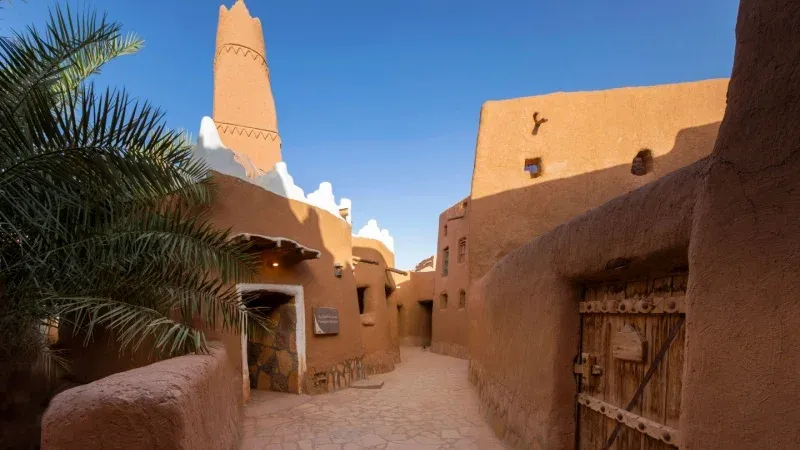
The Ushaiger Heritage village is over 1,500 years old and was once an important stop for pilgrims coming from Kuwait, Iraq, and Iran. It is surrounded by strong mud walls with wooden gates and towers. Inside, winding alleys lead through over 400 traditional houses, 25 mosques, and shaded palm groves. The buildings show classic Najdi architecture, with carved wooden doors, triangular roofs, and painted windows. At the center is the Al-Salem Museum, showcasing weapons, old tools, clothes, and jewelry made by locals. Ushaiger gives a real taste of old Saudi life and the traditions that shaped its culture.
Best Time to Visit: October to April
Ushaiger Heritage Village: Travel Tips
- Visit in cooler months (October to April) for a more pleasant walk around.
- Wear comfortable walking shoes, you’ll explore narrow paths and uneven ground.
- Carry water and sun protection, especially if visiting during the day.
- Hire a local guide if you want to learn more about the history and buildings.
- Don’t miss the Al-Salem Museum, it gives insight into local life and traditions.
10. Najran - The Oasis of Diversity
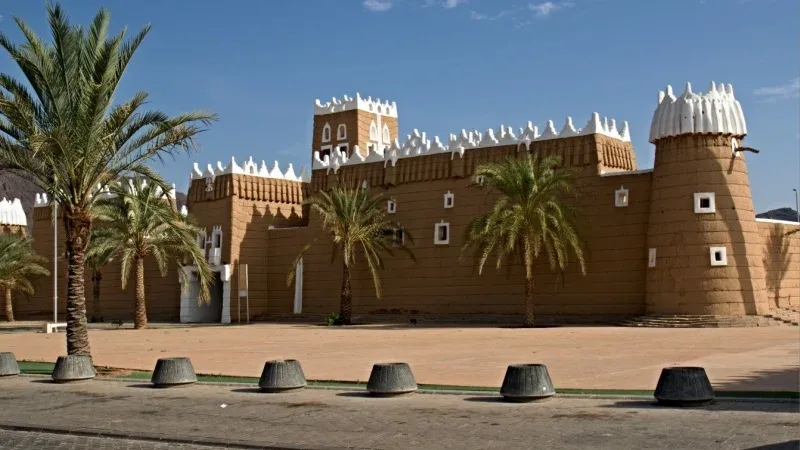
Najran is a city in southwestern Saudi Arabia, near the border with Yemen. It is known for its rooted history, natural beauty, and traditional culture. The city has been an important center for trade and farming for centuries. Najran is home to the ancient Al-Ukhdood archaeological site, the historic Najran Fort, and Al-Aan Palace. You will also find many old mud-brick houses that reflect traditional southern architecture. The Najran Museum gives a closer look at the region’s past. The city is full of palm trees and farms, supported by the Najran Dam, which is one of the largest in the Kingdom. Visitors can also enjoy local markets, handmade crafts, and delicious Arabian dishes.
Best Time to Visit: October to April
Najran: Travel Tips
- Visit between October and March for cooler & pleasant weather.
- Wear modest and light clothing, especially during warm days.
- Bring sun protection like hats and sunscreen if exploring outdoors.
- Stay hydrated, especially when walking around historical sites.
- Hire a local guide to better understand the history of places like Al-Ukhdood and Najran Fort.
- Visit traditional markets (souqs) to buy local crafts and try regional foods.
Suggested Read: Ravishing Things To do in Saudi Arabia to Explore the Kingdom Closely
Final Thoughts
Saudi Arabia has many amazing places that most people don’t know about. These hidden spots are full of beauty, history, and friendly people. If you love adventure, culture, or just want to see something different, this country has a lot to offer. In 2025, it’s a great time to visit. You can explore quiet villages, enjoy desert views, and learn about local traditions. The people are warm and welcoming. So, if you’re looking for a new and exciting trip, start planning now. Book a Saudi Arabia tour packages to explore hidden gems of this country.
Hidden Gems of Saudi Arabia - FAQ’s
Yes, most attractions in Saudi Arabia are safe and enjoyable for solos, couples, and families. Always check local advice and choose family-friendly tours when traveling with children.
Entry fees vary. Some sites like heritage villages are free, while places like AlUla or Diriyah may charge. Accommodation, food, and transport are generally good value compared to many Western countries.
Absolutely. Women can now travel freely across Saudi Arabia, though modest dress is expected. Many sites and hotels cater to female travelers.
Saudi Arabia is generally very safe. For remote destinations like the Edge of the World or Farasan Islands, travel with a group or guide, carry enough water, and inform someone of your plans.
Try regional dishes like saleeg (creamy rice with chicken), kabsa (spiced rice and lamb), fresh seafood at Farasan, and date-based desserts in Najran or Ushaiger.
Saudi culture is welcoming but conservative. Avoid public displays of affection, always ask before photographing people, and dress modestly in public places.
Major cities are connected by domestic flights, while taxis and ride-sharing apps work well in urban centers. For mountains, islands, or deserts, local tours or car rentals are best.
October to April offers pleasant, cooler weather perfect for sightseeing. Summers (May-September) can be extremely hot, especially inland and in the desert regions.

